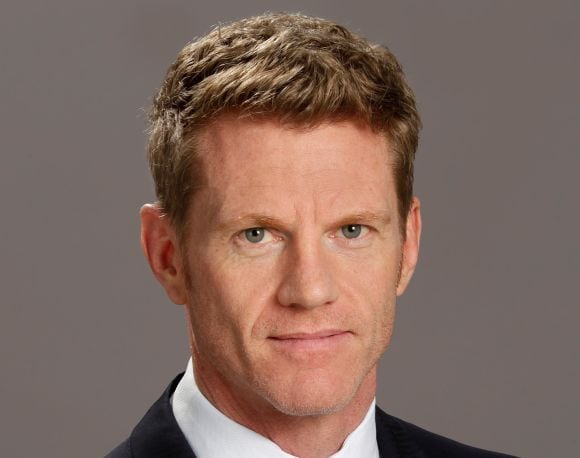The US version of Coca-Cola Life - which has 60 calories per 8-oz glass bottle (vs 93 cals for 8oz of regular Coke) - is rolling out in 65 Fresh Market stores in Georgia, North Carolina, South Carolina, and Florida.
By October, it will be available in a variety of packaging formats in scores of retailers nationwide, says Coca-Cola, which says it “is intentionally taking a measured approach to Coca-Cola Life’s US debut”.
“We ultimately want to be leaders in this emerging segment, and Coca-Cola Life is our first effort to make this a reality,” said Andy McMillin, VP, Coca-Cola brands, North America, who said Coke was planning a massive sampling drive in the coming weeks. “For consumers looking for a reduced-calorie soft drink sweetened with cane sugar and stevia leaf extract, this is a great-tasting option.”
Euromonitor International: If we’re going to consume calories there has to be a reason, whether it’s indulgence, or a functional or health purpose.
So what do market watchers think?

Speaking at the recent FoodNavigator-USA beverage entrepreneurs forum (click HERE), Euromonitor International beverages analyst Jonas Feliciano said that to think US consumers will drink as much cola as they did in the 1980s or 1990s is probably wishful thinking.
In short, shoppers now have so many options, that if they are going to use up valuable calories on beverages, there are plenty of other products that offer more functionality for their calories than Coca-Cola Life, he said.
Elaborating on this in a blog-post, he said: “The proliferation of beverage options available to consumers... cannot be ignored. Even if stevia, or any other sweetener, were able to completely replicate the taste of Coke or Pepsi with fewer calories, these beverages are not meeting the growing number of demands that consumers have from their beverages.
“Functionality, particularly energy, has been a major driver of value growth across most of the world. Natural hydration, such as coconut water, has also carved itself a small but growing niche.”
Expecting Coca-Cola Life, or any other low-calorie cola, to reverse the decline of cola carbonates in the US and the UK, ignores the broader shift in soft drinks
Meanwhile, US consumers aren’t losing interest in Diet Coke and Diet Pepsi purely because they are worried about ‘artificial’ sweeteners such as aspartame, he said, noting that lots of carbonated soft drinks containing ‘artificial’ ingredients are doing very well, from Monster Energy to Sparkling ICE.

Similarly, consumers aren’t against calories per se, he told delegate at our forum, just that if calories are there, they have to count: “If we’re going to consume calories there has to be a reason, whether it’s indulgence, or a functional or health purpose. It’s about what my drink does for me… People are looking for beverages that do more than simply hydrate.”
And as such, he added, “Expecting Coca-Cola Life, or any other low-calorie cola, to reverse the decline of cola carbonates in the US and the UK, ignores the broader shift in soft drinks. Yes, concerns about sugar and calories have caused consumers to re-evaluate the amount of soda in their diet, but presenting them with new formulations that are 'close, but not quite' in terms of taste will not reverse this trend.”
Instead of asking whether stevia can save low-calorie colas, a better question might be, are low-calorie colas worth saving
He added: “Rather than position Coca-Cola Life as a natural, low-calorie alternative to full-flavored Coca-Cola, the company may be better served embracing Coca-Cola Classic as an indulgent treat that an overwhelming number of consumers still enjoy, while continuing its work to find brands and products that meet these new beverage demands.
“Coca-Cola’s work on beverages outside the carbonates category – RTD teas Honest Tea, Gold Peak and Fuze, juice drink Minute Maid Pulpy and energy drink Burn – are a better representation of the changes in consumer attitude towards soft drinks, particularly in the US and the UK.
“While the decline in carbonates in the US and the UK is a cause for concern, these lost sales can be recovered through other categories. So, instead of asking whether stevia can save low-calorie colas, a better question might be, are low-calorie colas worth saving?”
Zevia CEO: Mid-calorie colas don’t please anyone
Zevia chief executive Paddy Spence - who was also speaking at the FoodNavigator-USA beverage entrepreneurs forum - also expressed doubts about mid-calorie colas, although he acknowledged that Coca-Cola Life is different to Pepsi NEXT and Dr Pepper TEN in that it only contains ‘natural’ sweeteners, whereas the others use a combination of sugar and artificial sweeteners in most markets.

“I think Coke Life is an interesting attempt by Coca-Cola to create something that [will bring] incremental [growth to the category] as it’s not zero calorie, it’s not full calorie, and it might be perceived as better for you," he said.
But what sounds like the best of both worlds could equally prove to be the worst of both worlds: “I think the real challenge is that you’re not really pleasing anyone. Full calorie drinkers say, 'Gosh this doesn’t taste like my full calorie soda'; zero calorie drinkers are saying: 'Why would I ever want 60, 80, 100 calories a can?'
“I think that at least speaking with the US market, the challenge has been that consumers have rejected mid-calorie sodas resoundingly. So Pepsi Next, which has 60% less sugar, is quickly going away on US shelves and the Dr Pepper Snapple ‘TEN’ calorie line doesn’t seem to have really gotten a lot of traction.”
Coca-Cola CEO: Coca-Cola Life is generating incremental volumes
Speaking to analysts in February, Coca-Cola CEO Muhtar Kent said Coca-Cola Life "has shown great promise in recruiting new and lapsed consumers into the sparkling category, as well as generating profitable incremental volume for our system.”
